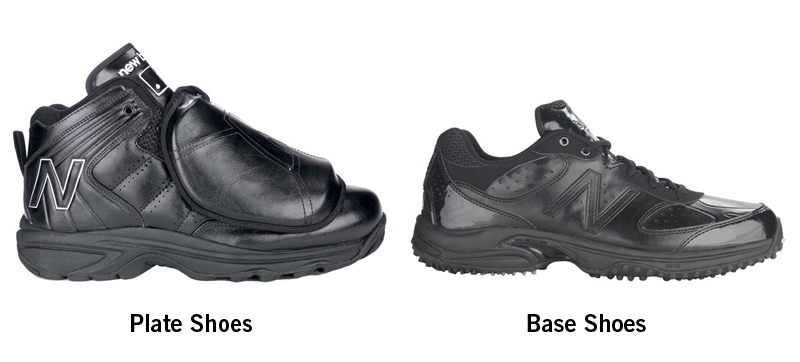Umpire's Equipment Buying Guide
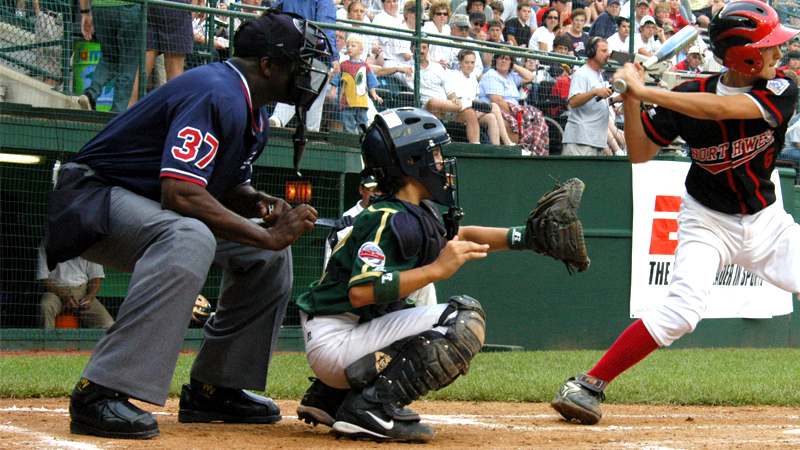
Umpire equipment is as different as the preferences of the person wearing them. The gear comes in different sizes, thicknesses, and weights to match the needs of different levels of umpiring. This buying guide will help you understand the differences between the various kinds of equipment and help you find the equipment that is right for you. Rarely is the most expensive gear always the best fit for the user.
As a general rule of thumb, the more expensive the gear is, the more bells and whistles it is going to have. Whether this means it is lighter or heavier depends on the specific model as well as the kind of protection it offers. We’ll get more into that in the specific categories of gear.
Umpire Face Mask and Helmet Fitting Guide
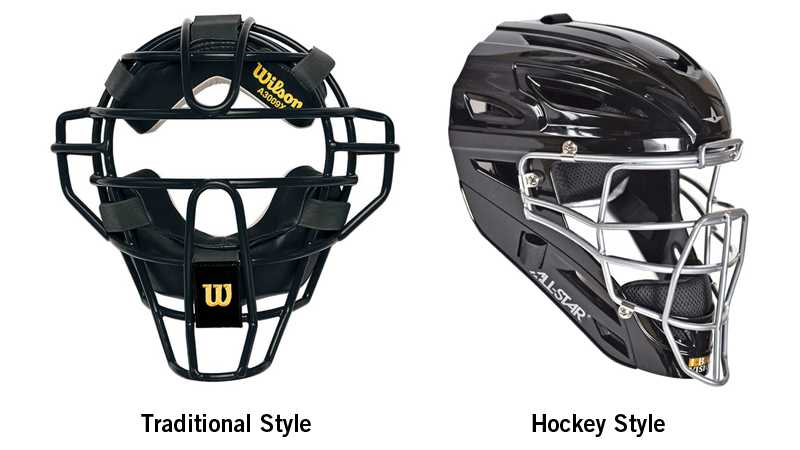
Unarguably, the most important part of your body to protect as an umpire is your face and head. This allows you the confidence to stay focused on the pitch and not worry about getting injured on a tipped ball. The first thing to decide is which style of mask is best for you. The two kinds of masks are the traditional face mask or the hockey style helmet.
The traditional mask is the more popular of the two because it has been around for longer and umpires are reluctant to switch to a different style. The hockey style helmet is still relatively new to the umpire world but is slowly gaining popularity. The main differences between the two masks are as follows:
Weight
The traditional mask is much lighter than the hockey style mask. While the difference in weight is only a pound or two, this is a significant difference when wearing it on your face for multiple hours a day. The hockey style mask does a better job of distributing the weight across the entire head, instead of all of the weight being on the face.
The biggest factors of weight are the materials of the mask and padding. The metal that makes up the cage is usually hollowed out and can be shaped in either an oval, a circle, or squared to increase strength and visibility. The material can be steel, magnesium, or titanium, and each mask weighs differently depending on the manufacturer. The two main types of padding are leather and fabric. Each manufacturer has their own version of fabric, but they are all lighter than their leather counter parts. The comfort of each material is discussed a little further down.
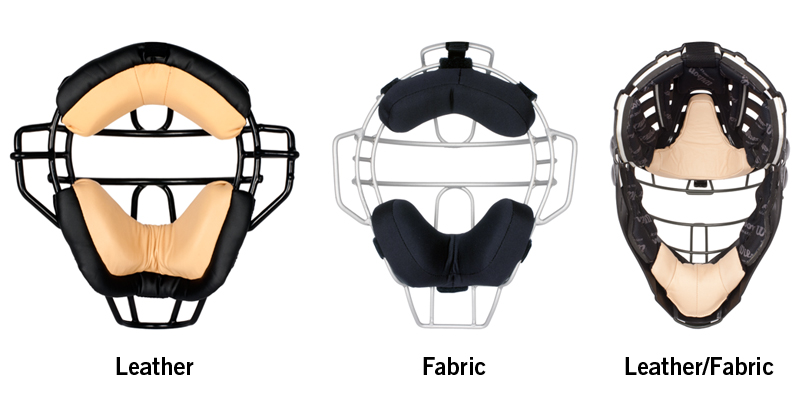
Protection
The hockey style mask offers additional protection than the traditional for obvious reasons; it covers more of the head. The hockey style mask protects from some of the more obscure injuries that occasionally happen when umpiring, such as a broken bat or a foul ball off a turned head. The hockey style does not trade off any frontal protection by offering the additional side and back protection. Another thing to consider with traditional masks is that many models come with extended chin and ear protection. This allows for extra protection without changing the comfort of the mask. There are also quite a few accessories that are available to increase protection, such as a throat protector that hangs from the chin of both styles of masks
Many umpires would argue that the hockey style masks have prevented a mild injury from becoming a serious injury if the user had been using a traditional mask. These injuries tend to happen at the higher levels of competition, but are still something to consider for all umpires.
Comfort
The different between the comfort of the styles of helmets is a personal preference. The traditional mask has less contact points, so it feels like there is less on your face. The hockey style mask wraps around the entire head, which makes the weight more evenly distributed. Since the hockey style helmet wraps around the whole head, it tends to pull the mask closer to the face. This allows for a better field of vision. Some of the traditional masks come in a low profile version that has a similar effect.
Each style of mask also offers a great amount of adjustability of the sizing. The traditional style tends to be the easiest to adjust. The typical traditional mask has three points of adjustment; left and right side straps and a top strap. The hockey style tends to have the same points of adjustment, with an additional option of moving the chin cup up and down, and closer and further with Velcro.
Another important aspect of comfort is the material of the padding. The two materials are usually lightweight fabric and leather. The fabric material tends to absorb sweat better, but the leather pads tend to become more comfortable over time because they form fit better. The leather can range from low end mix leather, to full grain leather, to calf skin leather.
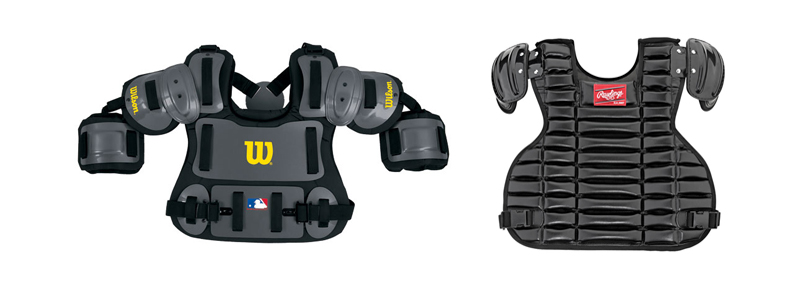
Umpire Chest Protector Fitting Guide
The second most important piece of equipment is an umpire’s chest protector. This is the most common place for umpire to get hit with a foul ball and protects many vital parts of the body. The measurements given by the manufacturer can help you decide what size will fit you based on measurements you can take. It is important to wear the correct size chest protector to ensure proper covering of the collar bone, shoulders, and ribs.
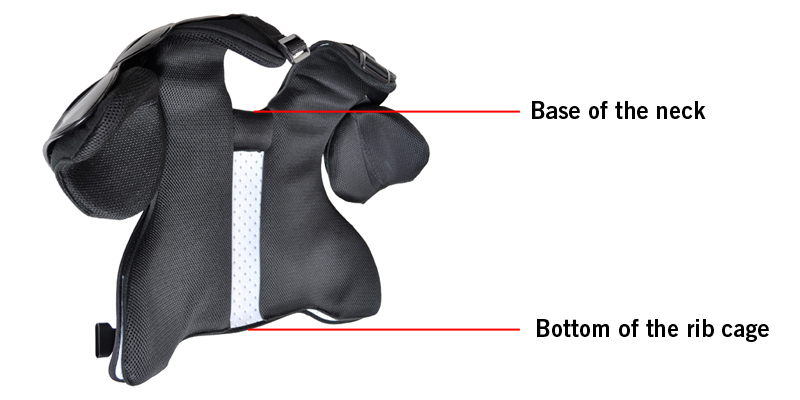
Sizing
The way the chest protectors are measured is to start from the bottom of the neck and go straight down towards the belly button. Now, it is important to remember that you don’t always want the chest protector to extend down to the belly button, but as far as you are comfortable with. Majority of umpires measure to the bottom of their rib cage. It is important to make sure this is what the chest protector covers because ribs can be bruised or cracked very easily from a foul ball. The straps in the back of the pad are very adjustable to make sure the pad can be secured tightly.
Majority of middle to high end chest protectors have an option of including an extendable piece of padding to add protection to the stomach area. These extra pads can also protect the shoulder area and additional arm protection.
More things to consider when sizing a pad are to look at the shoulder protection and neck fitting. These two measurements are not sizes provided by manufacturers, but can be easily estimated knowing your personal preference for fitting. You want the neck to be tight enough to protect your collar bone, but loose enough to avoid discomfort.
Protection
There are two main types of chest protectors, hard shell and soft shell. Hard shell protectors are designed with a hard outer shell with a significant of padding behind it. This is the most protective padding and the choice of almost all umpires. The soft shell protectors are soft padding with a hard inner shell for protection. The soft shell chest protectors tend to be most popular with umpiring lower than high school.
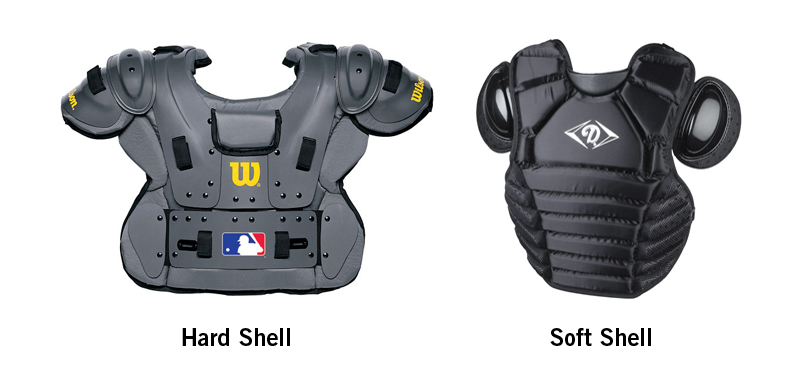
Hard shell chest protectors tend to be heavier than the soft shell counter parts. This is why they offer more protection. The soft shell protectors are much lighter and have more range of motion that makes them more comfortable. The soft shell pads also tend to have more breathability for them to stay cooler than the hard shells.
The bottom line is that the decision should be made based on the level of competition of the umpire. For college, minors, and majors, it is highly recommended that you go with a hard shell chest protector. High school is the middle ground of the two choices. It is better to go with a hard shell, but a high end soft shell protector can offer enough protection depending on personal preference. For leagues lower than high school, a soft shell chest protector is sufficient enough and can save you money and comfort.
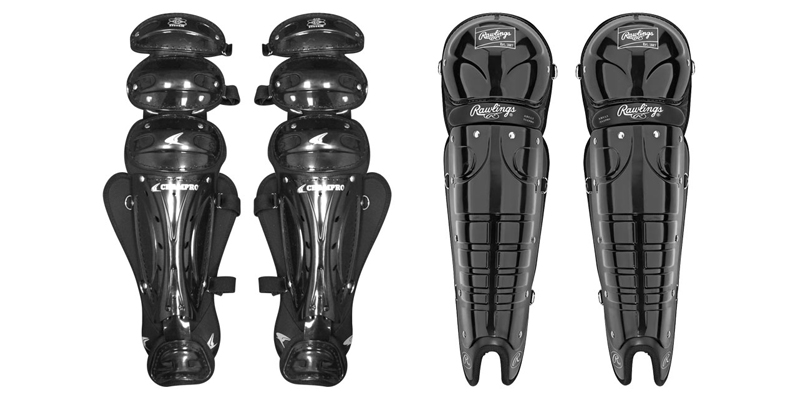
Umpire Leg Guard Fitting Guide
Leg guards, also called shin guards, are like chest protectors and offer more than just protection for the shin. The new styles of leg guards provide coverage of the shin, ankle, knee, upper knee, lower thigh, and foot. There are leg guards to fit the need of every umpire in every level of competition.
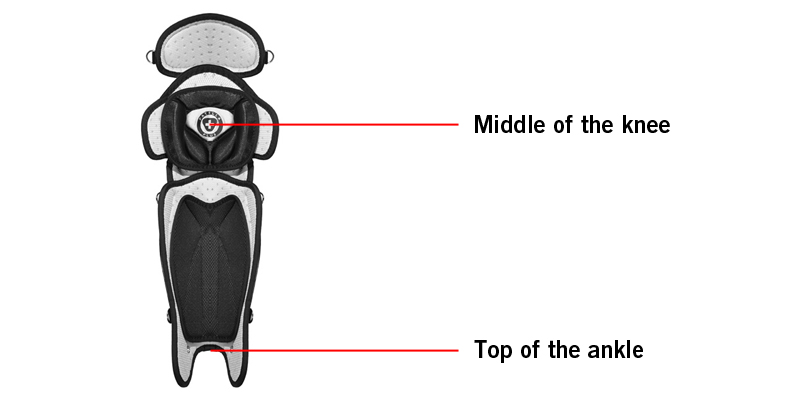
Sizing
The leg guard is measured from the middle of the knee to the top of the ankle. This is because the leg guard is designed to fit from the knee cup to the ankle protector. It is important to get the correct sizing because if a leg guard is too short, it will expose the bottom of the shin and ankle. If it is too long, it will not be comfortable to wear and crouch in.
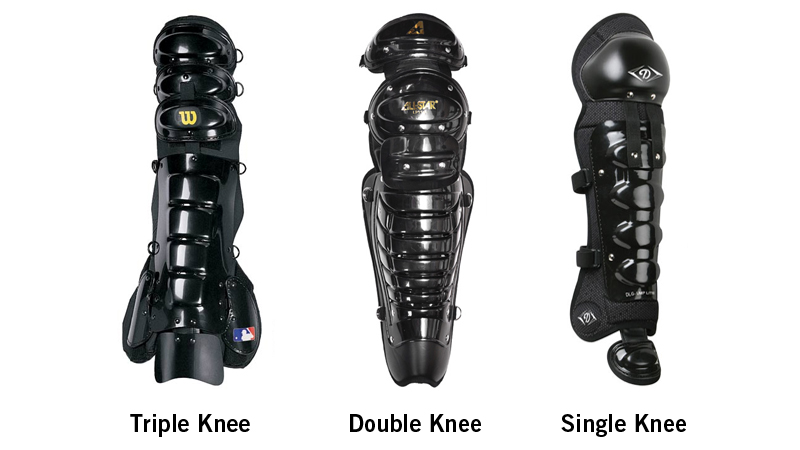
Protection
There are a few different styles of leg guards that include triple knees, double knees, and single knees. The triple and double knee leg guards are the highest end leg guard and offer the most protection. They have extra padding in the knee to absorb an impact. The extra hard shell on the outside is designed to cover the gap between the other shells when crouching down. The more gap coverage, the less chance a ball has to get through an open spot. The single knee leg guards are designs to be a low profile and super lightweight pad for umpires that prefer it. These are perfect for lower divisions of competition.
The triple leg guard also offers protection for the upper knee and the lower thigh. Majority of the leg guards come with a detachable toe protector. This toe protector is designed to protect the top of the foot. The extra protector is removable with either Velcro or snap off for umpires that wear plate shoes.
Umpire Protective Shoes
Umpire shoes are part of the uniform, but also serve as an important protector for umpires behind the plate. There are two different kinds of umpire shoes; plate shoes and base shoes. The base shoes are comfortable turf shoes that are all black. The plate shoes are comfortable shoes with a hard sole and a hard toe plate, typically steel toed. The plate shoes also offer protection for the top of the foot with a leather pad that covers the gap between the steel toe cap and the base of the leg guard. It is highly recommended to wear plate shoes at all levels of umpiring.
